Food Writers, Leaders, Chefs, and Cooking School Friends Respond!
Following my Personal Reflection about Food Trends for 2012, I invited five groups of knowledgeable food people to offer their insights and point of view regarding food trends for 2012. I have posted this series in the following order and hope you enjoy reading it as much as I have!
- Food Trends 2012: Part 1: My Personal Reflections
- Food Trends 2012: Part 2 :Food Bloggers and Part 3: Food Bloggers
- Food Trends 2012: Part 4: Local Edmonton Food Focused People
- Food Trends 2012: Part 5:National and International Food Focused People – this post
- Food Trends 2012: Part 6:Local Farmers
- Food Trends 2012: Part 7:Local and Not So Local Chefs and Bakers I know
I asked a number of my favourite food focused to provide their personal perspectives regarding food trends for 2012. I was thrilled each took the time to respond to my request.
Please feel free to ask each individual questions in the comments section here, as they come to mind. Certainly, as I was reading and preparing this post, questions came to mind that I will post in the comments section, too!
After reading these insights, please do take time to explore each of these websites; each has held my fascination for a very long time for varying reasons!
- Major local trend in your region?
- Trends throughout Canada or the US or your own country?
- Hopes and Wishes?
- Comments?
Dana McCauley: Food Trends and Innovation Expert
I started to follow Dana on Twitter last year when she was announced as one of the judges for the now defunct Canadian Food Blog Awards. Not too many people interest me on Twitter. I follow them to keep up and to learn, but Dana is different. In that mere 140 characters she is funny, compelling and a darn good read. I have found myself grinning more than a few times. The links she refers her followers to are also carefully considered. How does she do that? In any case, I enjoy her views, her humor and respect her knowledge about Canadian food. And a trend expert? Who better to ask… then what happened? She said YES! Oh, and did I mention that she then became my favourite judge on Recipe to Riches? I often enjoy Laura Caulder’s food show, but Dana won me over on this one! She is currently the Culinary Director at Jane’s Family Foods.
 1. What do you see as the major food trends locally (Toronto), and regionally (Ontario) 2012 ?
1. What do you see as the major food trends locally (Toronto), and regionally (Ontario) 2012 ?
- Toronto is an interesting place. We have some of the best chefs and most avid and affluent restaurant diners in the country; however, some of the local laws and by-laws prevent the city from joining in on some of the more interesting food and drink trends that are dominant in other markets. Specifically, Toronto is way behind in terms of food truck development compared to Canadian cities such as Vancouver and American cities like L.A., NYC and Austin.
- While local sourcing of ingredients is now mainstream for many Toronto and Ontario chefs (and an increasing number of home cooks), I think more independent restaurant chefs will continue to experiment with becoming artisans themselves by making cheese, charcuterie, preserves and other farmhouse foods of the past. On the other hand, the rising minimum wage and worries about food safety and efficiencies will see more chain owned restaurants buying fully cooked processed foods that are consistent and can be prepared by relatively unskilled cooks.
2. What do you see as major trends throughout Canada and or the US?
- Dining is becoming increasingly casual and increasingly influenced by global flavours. Instead of white table cloths and fresh flowers, new restaurant concepts will feature eclectic decor and exciting experiences by offering all on one menu everything from Vietnamese Bahn Mi to Foie Gras pate with the entire meal set to a sound track of indy rock music. The key words will be: fun, inclusive and easy.
- Molecular gastronomy is moving from science lab snobbery to smart and approachable thanks to the work of Nathan Myrhvold and his team who demystify in Modernist Cuisine the science behind sous vide and centrifuges to help chefs to highlight the natural flavours in common foods like peas and preserve the textures and tastes of delicate foods like fish. This book may well prove to be the bridge between molecular gastronomy and the local/artisan food movements.
- A move toward offering sustainable seafood choices at every level of the food business is afoot. While fine dining restaurants spearheaded this trend several years ago, now grocers and fast casual restaurants in both Canada and the US are starting to catch on and make these choices more accessible for all people.
3. What would your most sincere hope, wish, or desire be to see as a food trend in 2012?
- Excellent question! Can I offer a list?
- Everyone everywhere having enough nutritious and affordable food to eat
- Everyone everywhere making sustainable seafood choices
- The reassessment/reconfiguration of the quota and subsidy systems in the US and Canada that make some foods more expensive than they need to be if the market were free
Mara Jernigan: Chef, Cooking School instructor and Former President of Slow Food Canada
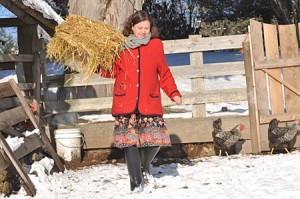 Mara came to Edmonton on her way across the country on the train headed to the National Slow Food conference last year. I had her for breakfast and we spend the good part of a week enjoying one another’s company. I watched her do a black box cooking challenge with my mouth open the entire time. She used to own a farm on Salt Spring Island and run a world class cooking school (top 50 in the world according to Gourmet mag), but now she is the Chef in the Jungle in Belize! Ever the adventurer, she has thrust herself into an incredibly challenging project setting up a jungle vacation cooking school which should be ready some time next year.
Mara came to Edmonton on her way across the country on the train headed to the National Slow Food conference last year. I had her for breakfast and we spend the good part of a week enjoying one another’s company. I watched her do a black box cooking challenge with my mouth open the entire time. She used to own a farm on Salt Spring Island and run a world class cooking school (top 50 in the world according to Gourmet mag), but now she is the Chef in the Jungle in Belize! Ever the adventurer, she has thrust herself into an incredibly challenging project setting up a jungle vacation cooking school which should be ready some time next year.
1. What do you see as the major food trends locally (name your locality), and regionally (your region) 2012 ?
- Vancouver Island: I see a trend towards cooking fancier things at home while going out for cheaper meals more often as a trend. This means people are taking more cooking classes, but are also looking for gourmet burgers, take out meals in grocery stores, pulled pork sandwiches and take out sushi. It’s a kind of attention deficit approach to food by a culture that is working hard and spending more and more time on line and less time eating with family. There is still a terrific interest in local food, but as people become economically challenged their willingness to pay top dollar for local organic produce may be curbed. The answer lies in home gardening, canning, foraging, and building meals around simple great ingredients that are good for our health and the environment, not just big hunks of meat. These foods may take longer to prepare and require skill and patience, but cost very little and give great pleasure! We need to create a Canadian peasant cuisine!
- Street foods, food carts, Korean food. Replicating ethnic foods using local ingredients. Making the foodie culture more accessible.
- Getting to the origins/ethics of any imported foods we may use, even for those who mostly use local, such as place of origin varietal chocolate, coffee cuppings to learn about different varieties and growing locales, buying a very good bottle of extra virgin olive oil, or hopefully one of the great, organically grown, small batch produced cold pressed canola oils from the prairies.
- My hope is that we get as many people to realize that food is a complex web that we need to learn more about on a deeper level. That sometimes the investment around an agricultural product takes years, like grapes or other fruits and that don’t fully bear for 5 years.So trends should not dominate what we eat as much as realizing what grows well, will sustain the planet, provide a decent living for the farmer, provide the most flavour, and increasingly adapt to climate change and the instability of a fossil fuel driven food system in a rapidly changing world. Eating really is a political act.
Sinclair Phillips: owner of Sooke Harbour House and founder of Slow Food Canada
Sinclair is an avid forager of wild mushrooms as well as his many other accomplishments. I met him at the National Slow Food Conference in Quebec last Spring and was an instant fan of his passion for really good food.
 I just talked to Pino Posteraro, the excellent Italian chef from Vancouver , who told me that expenditures on food by Italian families is down 30% this year due to the recession.
I just talked to Pino Posteraro, the excellent Italian chef from Vancouver , who told me that expenditures on food by Italian families is down 30% this year due to the recession.
- The dominant food trends in Victoria this year seem to be bigger portions, a proliferation of restaurants specializing in fancy hamburgers costing from $10 to $15 , very large portions of pork and beef ribs, coleslaw , and French fried potatoes.
- The demand for low quality cupcakes, fancy pizzas, and for gluten free foods is also increasing.
- At the same time, there has  been a  big decline in alcohol consumption in restaurants due to more stringent liquor laws and a decline in dining out in general as a result of these laws and the growing recession and a lack of tourism.
- There is a rapid decline in the availability of local meats on Vancouver Island for economic reasons but also as a result of a lack of slaughter facilities due to recent provincial regulations.
- There is also a decrease in in the variety of seafoods available due to stock depletion and shellfish such as crab has increased in price due to demand in China.
There are new winter outdoor food markets supported by Slow Food in Victoria and several local farms increasingly offer meat and produce to the public throughout the winter. An increasing number of individuals are raising back yard chickens on Vancouver Island and providing their own eggs. A few excellent bakeries and a new salumaria using local meats seem to be doing well. Here a Sooke Harbour House we have witnessed a big increase in the demand for local, wild mushrooms which are available fresh for about nine months of the year as well  as commercially available wild deer . Fresh seaweed is also gaining in popularity. We raise many of our own pigs for the hotel and locally cured meats continue to be very popular here and exotic vegetables such as tuberous nasturtiums, crosnes, and fuki from our certified organic gardens remain very popular with our hotel guests.
Bobby Gregoire: Chef and Interim President of Slow Food Canada
 Bobby helped plan the Slow Food Canada Conference that I attended in Quebec last year. He touts himself as a Gastronomy Specialist, freelance journalist, speaker and truly has a multitude of talents. He is currently the President of Slow Food Montreal as well as the Interim President. If you are fluent in French, he writes regularly on his very thought provoking website. You will see he has his finger on the pulse of what is happening within the Quebec food scene when you read what he has to say, below.
Bobby helped plan the Slow Food Canada Conference that I attended in Quebec last year. He touts himself as a Gastronomy Specialist, freelance journalist, speaker and truly has a multitude of talents. He is currently the President of Slow Food Montreal as well as the Interim President. If you are fluent in French, he writes regularly on his very thought provoking website. You will see he has his finger on the pulse of what is happening within the Quebec food scene when you read what he has to say, below.
Most Canadians, when they think of Quebec foods, think of raw milk cheese, Montreal bagels, smoked meat and poutine. So, what does make the Quebecois move on a culinary scene? What interests a society that spoke more about cuisine in the media than culture itself for the first time in 2011? Here is my forecast for 2012 Quebec consumer food trends in English. In French, please read it here.
Home brewing
Quebec is a big beer market. La Belle Province produced more than 400 commercialized beers from a few major breweries to hundreds of microbreweries. We drink mostly microbrewed beers that are available in every region of the province. But, as if it wasn’t enough with so much to offer and even acclaimed beers sommeliers, the typical male Quebecois tends to domesticate the art of home brewing. In the last five years alone we have seen the explosion of beer themed workshops, brewing classes and also the never increasing accessibility to quality and locally grown ingredients. In families across the province, it is becoming more and more common to have at least one or two members that do home brewing of quality beers. I foresee that this trend will continue to grow in the next years to come.
Natural and biodynamic wines
With more and more articles in the written press and online media and also with an ever-increasing popularity of private wine agencies in Quebec, the wine scene is switching its focus to small scale high quality wines importations. The wines available today to the Quebecois are more diverse. Where we saw mostly high production of common wines in the past, we are not only seeing a blossoming of diverse wines in taste profiles, but also in their production methods, arriving in Quebec. It’s through private agencies that we are finding most of natural and biodynamic wines that where discarded before by the SAQ (Sociétédes alcools du Québec). This new trend is mostly forged by the fact that most restaurants now offer wines from private agencies that offer an increasing selection of natural wines every year. Private importation of wines are more accessible in restaurants, but also to consumers. I suspect a major change in the wine consumption of Quebeckers in the next few years.
Local wine tourism and wine literacy
With a world of wine in transformation, a big part of culinary media speaking about wines and star sommeliers as we see star chefs on food Channel, Quebeckers are beginning to care about local winemakers. Let’s face it, Quebec wines don’t have the prestige of our “œcidres de glace”, except for our “œvendanges tardives” wines. Though, with the help of international and local tasting events like Finger Lakes Wine Festival, All Canadian Wines Championship, “œLa Coupe des nations”, “œLe jugement de Montréal” and other Wines competitions, some of our wines are seducing more and more people and sommeliers. With astounding white wines and a selection of surprisingly excellent red wines, critic’s columns have never talked so much of our own wines. Add to this equation several wine routes and the creation of two wine tour companies (Kava tours and Héli vino) and you have a trend that will grow in 2012: wine literacy through local wine tourism.
Dani Valent: Independent Writing and Editing Professional
 Dani approached me to include one of my recipes in her newly published Thermomix Cookbook:Â InTheMix. Making yogurt in the machine seemed to be difficult for people, so I did a really rough video of how to make it, and became the Thermomix Yogurt Overnight Diva. Thus, my homemade yogurt recipe is in there. It is my yogurt cheese, cheese balls and the spice=herb mix I make for them that I am most proud of. 🙂 It is an incredible book and seeing the fruits of her labour, understanding her interest in food and cooking, I asked her to contribute her thoughts from the Melbourne Area in Australia which she kindly did.
Dani approached me to include one of my recipes in her newly published Thermomix Cookbook:Â InTheMix. Making yogurt in the machine seemed to be difficult for people, so I did a really rough video of how to make it, and became the Thermomix Yogurt Overnight Diva. Thus, my homemade yogurt recipe is in there. It is my yogurt cheese, cheese balls and the spice=herb mix I make for them that I am most proud of. 🙂 It is an incredible book and seeing the fruits of her labour, understanding her interest in food and cooking, I asked her to contribute her thoughts from the Melbourne Area in Australia which she kindly did.
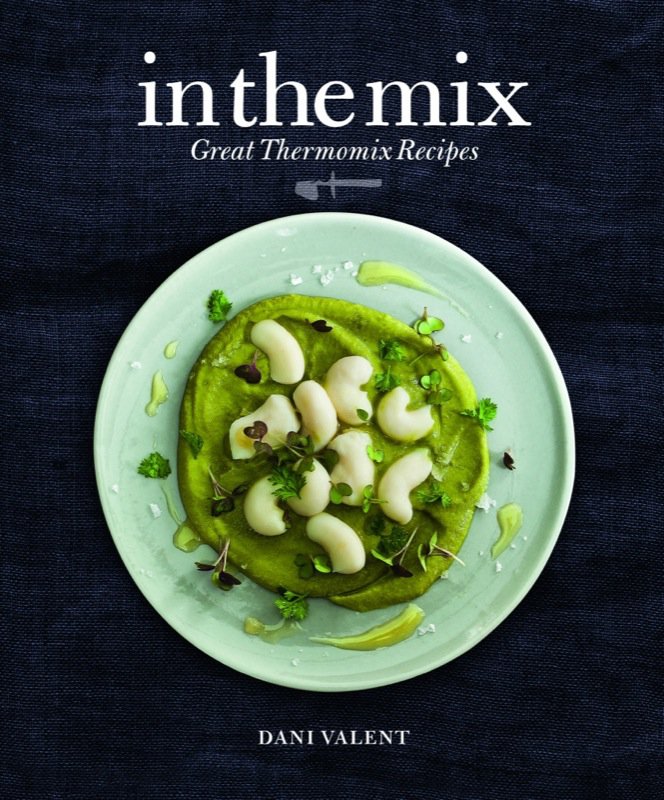 1. What do you see as the major food trends locally (name your locality), and regionally (your region) 2012 ?
1. What do you see as the major food trends locally (name your locality), and regionally (your region) 2012 ?
- I’m in Melbourne, Australia, where thinking about produce is the major food trend. More and more people seem to be questioning whether their meat is free range, their fish is sustainably harvested, and their fresh produce is local, pesticide and GMO free. Many home cooks and chefs are growing some produce themselves, even if it’s just herbs on a windowsill.
2. What would your most sincere hope, wish, or desire be to see as a food trend in 2012?
- I hope that mainstream restaurants start thinking more about sustainable seafood. On a lighter note, I’ve noticed that Korean-style kimchi pickles are appearing in lots of non-Korean restaurants. I hope that continues because I love kimchi!
- I think that Thermomix will continue its march into established and emerging markets, enabling thousands more people to cook with confidence and delight.
Letizia Mattiacci from Alla Madonna del Piatto and her blog at Madonna del Piatto
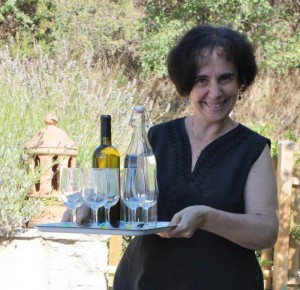 Vanja and I stayed at Letizia’s agriturismo this fall in Assisi and I attended a cooking class with her as well (again, post coming soon: don’t forget I just had a family wedding in November! 🙂 ). Letizia is a doctor of entomology and has completely changed her life to celebrate her region and the food of it. She has lived all over the world and her global perspective is revealing. She is one passionate and learned gal. Meeting her was an honour and a privilege and I hope to visit again. Her blog is an excellent resource if you are interested in traditional Umbrian cuisine. (YUM!)
Vanja and I stayed at Letizia’s agriturismo this fall in Assisi and I attended a cooking class with her as well (again, post coming soon: don’t forget I just had a family wedding in November! 🙂 ). Letizia is a doctor of entomology and has completely changed her life to celebrate her region and the food of it. She has lived all over the world and her global perspective is revealing. She is one passionate and learned gal. Meeting her was an honour and a privilege and I hope to visit again. Her blog is an excellent resource if you are interested in traditional Umbrian cuisine. (YUM!)
1. What do you see as the major food trends locally (Assisi), and regionally (Umbria) 2012 ?
- Ours is a rural area and people tend to be very conservative. They tend to stick to the wonderful products we have, olive oil, truffles, pecorino and cured meats like prosciutto di Norcia. Homemade fresh pasta is still the star of a Sunday meal.
2. What do you see as major trends throughout Canada and or the US and or Italy?
- In the US I see more attention to fresh organic ingredients and a return to the small distribution. In Italy I see a tendency to overuse ready made meals. World is global after all. I do find however that Italians are still very well informed about the quality of what they eat.
- I wish people to invest more on food. I wish them to look around and buy from small producers in their own area. I wish for people who go on holidays to appreciate local seasonal food and buy local products from small estates. It’s a form of social support for those who invest their life, work and passion in producing something special as well as something sustainable.
- Food intolerances are becoming rampant. This is related to the production of large scale mass produced food which I mentioned above. Too many toxic chemicals are added to industrial food. It’s time to re-think our philosophy of eating.
Martina Kuhnert from GolosaItalia and her partner Maribel from Taste of Italy

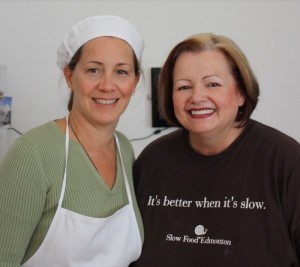 Vanja and I met Martina in Edmonton last summer and then stayed with her in Bologna in the fall. I plan to post our adventures with her in January. She is a maverick tour guide: second to none! She hails from Germany and has lived in Nanaimo, Canada for three years as well as Bologna.. Maribel taught me how to make Bolognese pasta by hand and this was one of the highlights of the entire trip as it was such an intimate culinary experience: a life changing day. They worked together to develop their answers to my questions for us.
Vanja and I met Martina in Edmonton last summer and then stayed with her in Bologna in the fall. I plan to post our adventures with her in January. She is a maverick tour guide: second to none! She hails from Germany and has lived in Nanaimo, Canada for three years as well as Bologna.. Maribel taught me how to make Bolognese pasta by hand and this was one of the highlights of the entire trip as it was such an intimate culinary experience: a life changing day. They worked together to develop their answers to my questions for us.
1. What do you see as the major food trends locally (Bologna), and regionally (Emilia-Romangna, Italy) 2012 ?
- The food scene in Italy is very traditional, based on the indegrients of the area, here in Em-R. we have Torteloni, Tagliatelle, Mortadella, Parma-ham, Parmigiano cheese and Balsamico vinegar. In general, you cook from scratch, even buying the pasta from the supermarket counts like convienient food, lots of households do the pasta at home. You find countless specialized shops for meat, cheese, wine, vegetables to get fresh ingredients: the variety is huge: for example, you can find around 30 different kinds of Prosciutto.
- Even the single households who don´t cook, don´t buy frozen food; they buy daily fresh prepared but sealed meals from the fridge shelf, the freezers in the supermarked are very small sized compared to the fridge department.
3. What would your most sincere hope, wish, or desire be to see as a food trend in 2012?
- I really hope that the Italians keep paying attention to what they eat and that they´ll teach also the next generation to cook traditionally.
4. Any other comments…
- Compared to Germany and Canada, Italy is the paradise island for foodies when it comes to variety of ingredients and freshness, but the cooking is very traditional. Only some avantgarde chefs like Massimo Battura start to change the recipe, he´s using the same ingredients but prepares them in a different way.
Anne Robichaud from Anne’s Italy
Vanja and I had the privilege of attending a culinary tour with Anne through Assisi and Spello this fall, in Italy. She has lived there since 1975 and most definitely has a handle on what is happening food-wise from a global perspective.
 I wish that the concept of Umbrian culinary historian Nadia Marconi would become more diffuse. I wrote about her and what she thinks here.
I wish that the concept of Umbrian culinary historian Nadia Marconi would become more diffuse. I wrote about her and what she thinks here.
- Nadia says: Â Frozen foods, no! Why unwrap, heat and serve a food? Food is a language, a way of communicating and enthusiasm must be added to its preparation and the serving to friends. You have to put your soul into food. Let us communicate over food. Aromas, flavors, colors all transmit messages – such a perfect form of communication! Let us educate our youth, our children to the flavors of food as communication.”
- Indicating her husband seated next to her, Nadia continued, “œWe are two simple spirits and lovers of la cucina tradizionale: from the garden to the table, food as a reflection of our relationship with nature.” Nadia indicated the paper plates and forks with disdain, grimacing “œI do not even want to see these!” As she talked, friend Joan and I began to wish that we had had Nadia as a teacher! “ In school, I do not like written tests,” she said, “œas I want my students to talk to me, taking the time they need to organize their thoughts, ideas. Each one’s natural rhythms should be respected. Just as in the preparation of foods”.
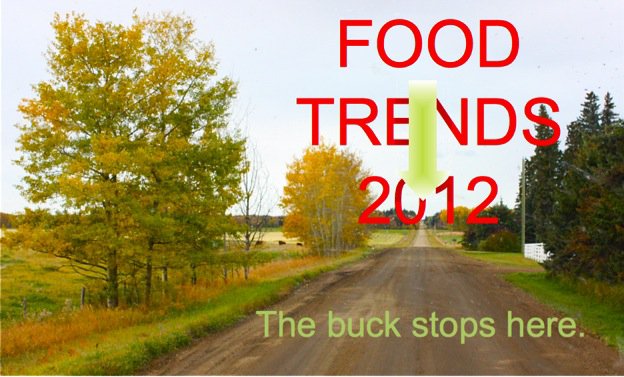
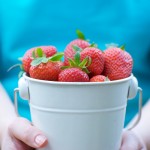


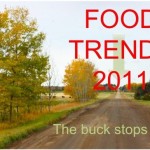
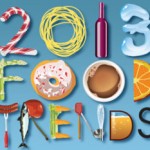
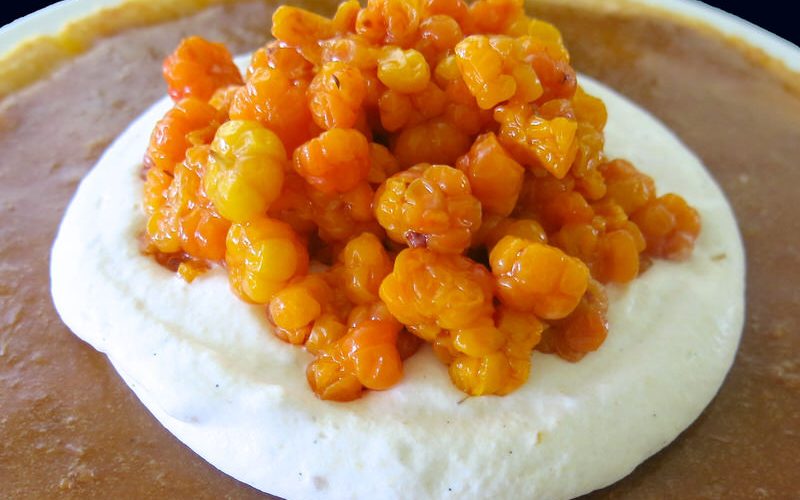



Thanks for including me in this estimable group! Happy New Year and thanks for your kind words of introduction.
What a great post with so many great thoughts! Happy New Year Sweet Friend! Thank you for knowing how to make me smile with your words, your food, and your presence in my life. Blessings in the year to come!
It really is amazing that all these people took time to share their thoughts and insights.
Sitting on my balcony on the Awhitu Peninsula, swatting the flickertails away from my grapes (they’ve reached our balcony this year), listening to the crickets sing, and enjoying your posts to the very last word!
So good to see a gathering of people whose written/spoken food thoughts I respect. It’s been a long time coming, but you’ve started a meaningful conversation among intelligent people about one of life’s most essential pleasures. (I believe pleasure is the number one essential). Great to hear what’s up, trend-wise, with Sinclair P., Dana, Myra in Belize, Leanne, et al. My husband just came back from building a school (or something) in Belize with jars of homemade guava jelly in his suitcase. Don’t know how he got it through customs — didn’t ask — but Myra’s jungle food project sounds phenomenal.
I used to write about food for an Edmonton newspaper, and have watched the Edmonton food community begin to grow and flourish. Can’t tell you how happy it makes me to see what’s happening there now, among chefs, producers, food lovers in general.
Your encounter with the Italian food woman in Italy brought back memories of classes I took there from a woman named Marcella Hazan. She had total disdain for North American coffee (“dirty water”) and frozen food, (“spinach in cryogenic captivity”), but then she had the markets of Bologna and/or Venice at her disposal.
Personally, I’ll take a flash-frozen butter-steamed petit pea any day over one that’s been grown in China, shipped under a Canadian packaging regulation that let’s it go to market as Product of Canada, and hits my plate at the ripe old age of three weeks off the vine.
Valerie, please stay with it. Love this!
Dear Judy,
I definitely know you were with the Journal. I read your work for years, down to every single piece of artisan bread slathered with something new and worth discovering. Thank you for not only stopping by, but for your engaging response. What a lovely surprise! I will never think of frozen spinach in the same way! You are singing my song and in way better tune than I!
Deep bow!
🙂
Valerie